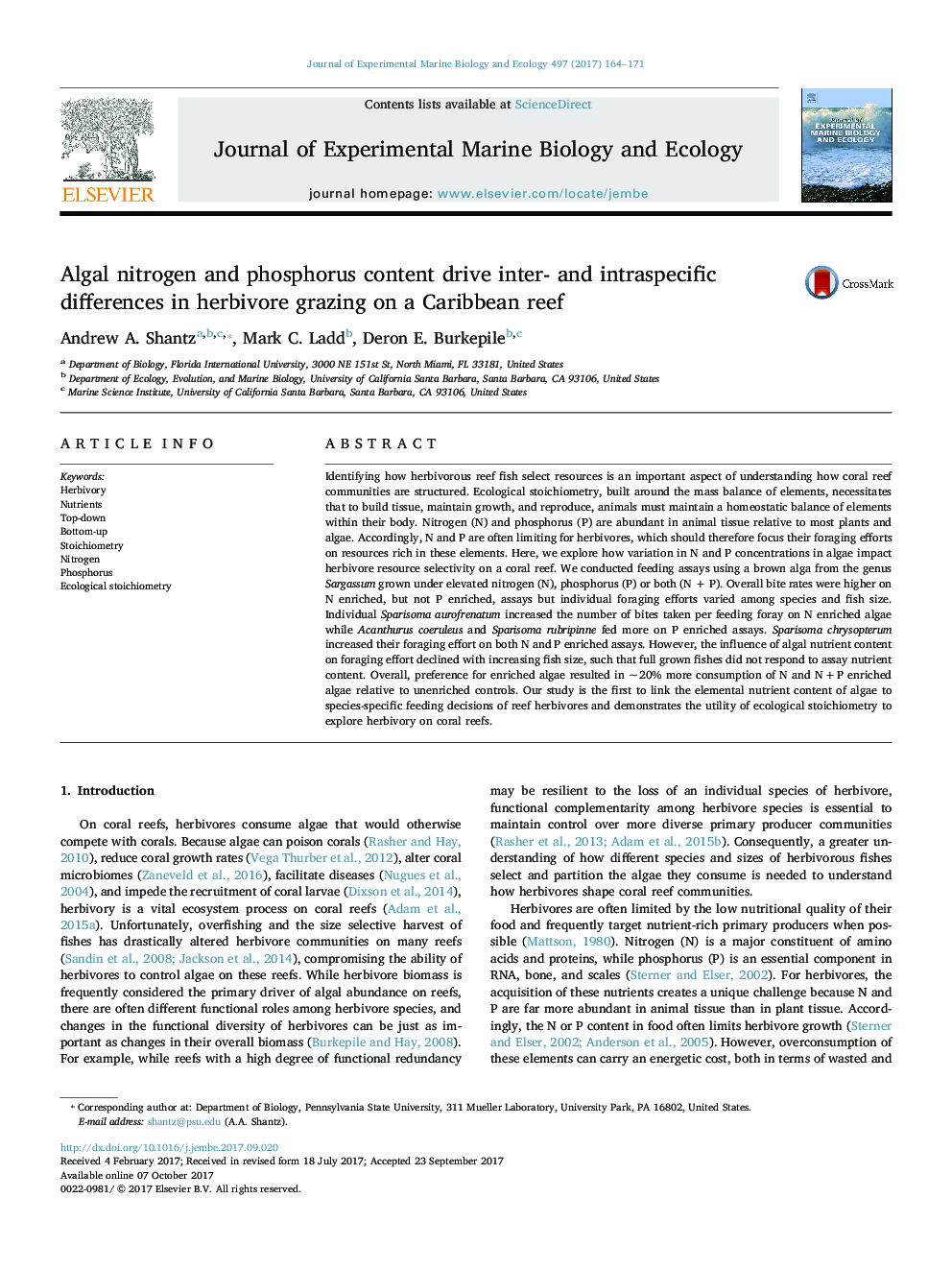| کد مقاله | کد نشریه | سال انتشار | مقاله انگلیسی | نسخه تمام متن |
|---|---|---|---|---|
| 5744444 | 1618378 | 2017 | 8 صفحه PDF | دانلود رایگان |
- Herbivory is an essential process to maintain healthy coral reefs.
- Understanding foraging behavior is therefore critical for coral reef ecology.
- We show that different fish species target nitrogen or phosphorus enriched algae.
- The influence of nutrients on diet selection decreases as fishes grow.
- Herbivorous fishes partition resources along nutritional axes on coral reefs.
Identifying how herbivorous reef fish select resources is an important aspect of understanding how coral reef communities are structured. Ecological stoichiometry, built around the mass balance of elements, necessitates that to build tissue, maintain growth, and reproduce, animals must maintain a homeostatic balance of elements within their body. Nitrogen (N) and phosphorus (P) are abundant in animal tissue relative to most plants and algae. Accordingly, N and P are often limiting for herbivores, which should therefore focus their foraging efforts on resources rich in these elements. Here, we explore how variation in N and P concentrations in algae impact herbivore resource selectivity on a coral reef. We conducted feeding assays using a brown alga from the genus Sargassum grown under elevated nitrogen (N), phosphorus (P) or both (NÂ +Â P). Overall bite rates were higher on N enriched, but not P enriched, assays but individual foraging efforts varied among species and fish size. Individual Sparisoma aurofrenatum increased the number of bites taken per feeding foray on N enriched algae while Acanthurus coeruleus and Sparisoma rubripinne fed more on P enriched assays. Sparisoma chrysopterum increased their foraging effort on both N and P enriched assays. However, the influence of algal nutrient content on foraging effort declined with increasing fish size, such that full grown fishes did not respond to assay nutrient content. Overall, preference for enriched algae resulted in ~Â 20% more consumption of N and NÂ +Â P enriched algae relative to unenriched controls. Our study is the first to link the elemental nutrient content of algae to species-specific feeding decisions of reef herbivores and demonstrates the utility of ecological stoichiometry to explore herbivory on coral reefs.
Journal: Journal of Experimental Marine Biology and Ecology - Volume 497, December 2017, Pages 164-171
